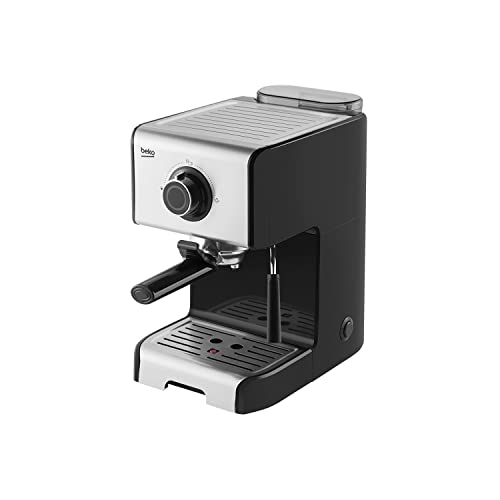How to Use a Coffee and Espresso Maker
A coffee and espresso maker creates shots of highly pressurized water that is forced through finely pulverized, tightly packed espresso beans. The result is an intensely tasted drink with a thick crema on top.
Certain machines make use of grounds or pods and allow you to control the strength of your brew is, while some can also steam milk for cappuccinos as well as lattes. You can also find a stovetop version that functions as a moka pot.
1. Guide to Buying
The most efficient espresso and coffee maker isn't just a device that pours hot water over the grounds. It's a piece of equipment that will allow you to make quality drinks in the comfort of your own home. There are many options in this area and it can be overwhelming. However there are certain aspects to take into consideration when selecting the right machine.
Understanding the different brewing methods is the first step. Some machines use gravity to filter water through the grounds and others brew with a pump. The differences between these approaches can impact the final flavor profile and cost.
The most advanced coffee and espresso makers are usually the most expensive. They may come with digital controls or programmable settings. As such, it's important to consider how often you'll be using your coffee maker and if the added costs are worth the added convenience and control.
Semiautomatic models are offered at a lower price and offer an alternative between automation and manual operation. These machines require manual labor, like grinding and tamping. However they are more affordable than fully automated models and permit an easier and more controlled brewing process.
2. Instructions
It is simple to use an espresso maker and coffee maker. The most crucial step is selecting the right ingredients and then preparing the machine. It is recommended to make use of fresh coffee beans that have been roasted in a burr grinder specifically for espresso. The grinder produces an even, fine powder that releases the finest flavor from the coffee. You can make use of a steam wand to make lattes and capspuccinos.

You will need to turn the espresso machine on and let it heat up before you prepare any drinks. This could take a few minutes, depending on the machine's size. It is essential to ensure that the machine is heating evenly. This process can be speeded up by pulling a blank which is to run the machine without grounds in the portafilter. This will not only heat your cup but also flush the group head to prevent a buildup of dirty brew.
Once your machine is preheated, you'll need to add ground beans to the portafilter. Then, tamp down the grounds to ensure that they are evenly and tightly packed. You can purchase the tamper on the internet or from a variety of espresso retailers. After you've finished turning on the machine and put a small cup underneath each spout. To brew the espresso simply move the control panel to the espresso position. This activates the micro-switches that start the pump and the heating chamber, pushing hot water through the grounds and out of the spouts.
3. Ingredients
A coffee or espresso machine can create various drinks. These are the most versatile of brewing devices. They can be used to create espresso and drip drinks.
Espresso is a concentrated drink that is made by pushing hot water under high pressure through finely ground coffee beans in a brief amount of time. It's often sweeter and a little bit thicker than regular coffee. It's an excellent way for you to get more nuanced flavors than those in drip coffee. However, it's not suitable for all people.
The best espresso is dark-roasted and a bit coarsely ground to maximize flavor extraction. Vigil suggests that you "bloom your coffee" before brewing. This means pouring hot water over the ground and letting it rest for 20-30 second (releases flavor notes). After adding the rest of the hotwater, you will use the machine's pressure to force the water into the grounds.
Certain machines are better than others. This is the reason why certain coffee and espresso makers are criticized for being difficult to use. But with a little practice, you'll be able to make your own espresso at cafe quality in no time.
There are other ways to make almost-espresso with no machine, for example using siphons (a fancy glass device that makes use of vapor pressure to immerse the grounds in hot water). This can be a labor-intensive and time-consuming process.
4. best cheap espresso machine
Before you use your espresso maker, ensure your machine is connected and heated. You want to maintain the same water temperature throughout the process of brewing so that you get the maximum amount of flavor. It's also an excellent idea to "bloom" the grounds of coffee, or pour a tiny amount of hot water over them for around 30 seconds. This will help release the carbon dioxide from the beans and improve the taste of your espresso.
When the brew is complete, remove the portafilter and serve. You can use an espresso maker to make single and double shots, or a steam milk frother or wand to make cafe-style drinks like lattes and cappuccinos. Add sugar to your espresso for a more decadent, sweeter drink.
You can make use of your espresso maker to brew a pot of regular coffee as well, but you'll need to use a filter as most models aren't able to hold enough to make a full pot. The key to making a good pot coffee is starting with freshly made, high-quality beans which are ground to the correct consistency.
You can also try making use of different kinds of water. Hard water is more dissolved minerals, which could cause mineral buildup and a less-flavorful brew; soft or filtrated water can cut down on the buildup.
